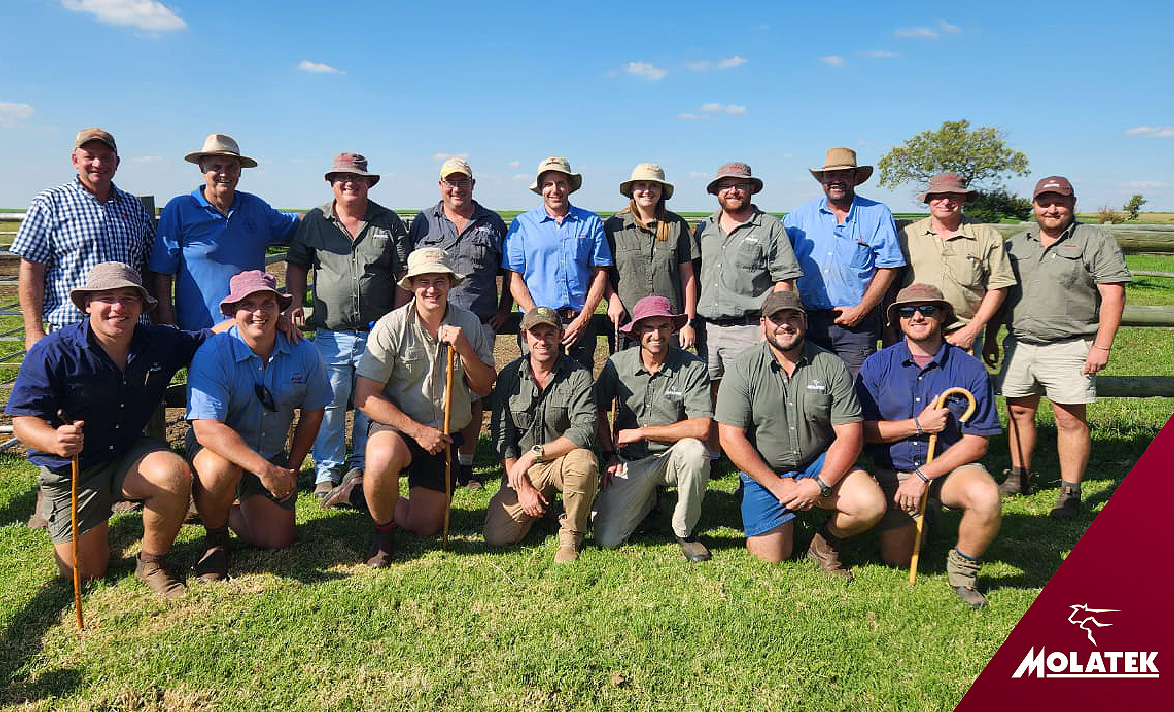Navigating Lambing Systems for Optimal Results
By Erin J Graham
Technical Manager – Molatek
Erin.graham@rclfoods.com / 083 795 7270
The Background
The agriculture industry continually seeks to maximize livestock production in the pursuit of optimizing production systems for efficiency and economic viability. The sheep industry is essential in the South African livestock sector which contributes significantly to the economy. The industry is seeing a pronounced shift towards intensified production systems. Traditionally, extensive or pasture-based production systems were prevalent, but there’s been a noteworthy shift towards more intensive systems utilizing lambing pens. This transition is driven by various factors including stock losses due to theft and predators, increased drought incidents, and a decrease in the national flock number.
As farmers explore options for semi-intensive pasture lambing systems or intensive systems based on total mixed rations (TMR), it is crucial to understand that each system has unique nutritional and managerial requirements as well as different economic demands. Due to the absence in current literature, questions arose from industry as to which system is more economically and sustainably viable. As the transition towards more intensive production systems unfolds, managerial inputs are expected to expand accordingly.
The study
The economics of highly intensive versus conventional small livestock production systems is a topic of ongoing debate. A study was undertaken aiming to discern the economic disparities between the two approaches, over two lambing seasons.
One-hundred and twenty Merino ewes that were due to lamb, following an accelerated lambing system, were divided into 2 groups, 2 weeks (14 days) before lambing. Ewes were further divided into subgroups of singles and twins. The first group was placed on irrigated pasture where they only received supplementation, referred to as the pasture treatment. Camp effects were mitigated using planned pasture rotation. The ewes and lambs were rotated between Rye grass pastures during the day and to ensure the well-being and safety of the pasture treatment, they were moved to a designated night camp in the evening. Simultaneously, the pasture treatment received their supplemental feed in the night camp. The singles and twins received 350g/day and 500g/day respectively, of Molatek Lamb & Ewe Lick Supplement (V25056).
The second group, referred to as the TMR treatment, were fed a complete diet (Molatek Woolmaster V19782 mix) and confined to lambing pens from birth to weaning. The ewes were confined to individual lambing pens for lambing and remained there for up to a week before being allocated to small group concrete pens for statistical comparisons. The singles were limited to 2200g/day and the twins were fed ad lib. All animals, in both treatments, had unrestricted access to hay. It is worth noting that no creep feed was administered; instead, lambs in both groups had access to ewe ration and supplementation. The animals remained in their respective groups for the duration of the trial.
Natural cover was used for mating in both treatments. The pasture treatment lambed on pasture or in their night camps whereas the TMR treatment lambed in lambing pens. In instances where complications arose during lambing within the grazing group, ewes received specialized care in lambing pens before being reintegrated into the larger group. A systematic evaluation of animals was conducted on a weekly basis using the FAMACHA system to monitor for internal parasites, weighing of both ewes and lambs to determine ewe efficiency as well as faecal samples collected to analyse faecal cortisol concentrations to determine ewe stress levels. The initial lambing season occurred in the spring on ryegrass, established in the preceding autumn, followed by a second lambing season in the subsequent autumn on newly established ryegrass.
The Results
Ewes can experience up to a 10% body weight loss during lactation without negatively impacting future production, if they are appropriately prepared in the six weeks leading up to lambing. Despite aiming for an 8% mass loss in accelerated lambing systems, the trend observed in the study was an increase in ewe mass. The ewes in the TMR treatment displayed a tendency to increase in body mass where season 2 exhibited higher ewe birth mass compared to season 1. However, the lamb birth weights for season 2 were lighter in comparison to season 1. This is a notable concern, and one must be wary about ewe mass increasing to the point that it hinders lamb birth weight. Despite this, ewe mass can be controlled with competent managerial inputs and frequent weighing of animals, which is essential.
In all treatment groups, lambs consistently exhibited a growth rate surpassing 2.2% of their body mass daily, indicative of healthy milk production and lamb development. The pasture treatment had an average birth weight of 4.87kg and the TMR treatment an average of 5.15kg. Despite the TMR lamb weight being slightly heavier, 80% of the lambs from both treatments were born within the target birth weight of 4-6kg. Marginal discrepancies between groups were observed while the weaning mass remained relatively consistent between seasons and treatments. Both treatments exhibited similar animal performance, with the TMR treatment showing a 4% higher weaning percentage.
Lamb mortalities were observed and recorded for both treatments, across both seasons. However, significant fluctuations between treatments and seasons hindered the identification of a clear trend in lamb deaths. It was observed that ewes giving stillborn lambs, for various reasons, accounted for approximately ±4% of the total lamb mortalities. This indicates the reality of stillborn lambs occurring at the onset of a lambing season. Achieving 90%-plus conception in an accelerated lambing system was comfortably feasible with teaser rams and natural coverage, with 85% of ewes lambing in their first cycle. Foster lambs and mortality rates were higher in the pasture treatment compared to the TMR treatment. Lamb mortality was 11.5% for the pasture treatment and 8.9% for the TMR treatment. Notably, mortality within the first 48 hours post-birth remained below 2% for both treatments, emphasizing the importance of adequate nutrition before lambing, regardless of the system in which the ewe functions. Unknown deaths after the initial 48 hours accounted for an additional 2%, supporting the above. Finally, it was determined that approximately ±15% of ewes in a herd required additional lambing attention, mostly young ewes, irrespective of the lambing system. This prioritizes the option for utilizing lambing pens in a semi-extensive approach, focusing solely on ewes facing issues.
Wool was also analysed as part of the economic analysis of the trial. The superior clean yield observed in the pasture treatment compared to the TMR treatment is noteworthy. Twins in the pasture treatment yielded approximately 4% less wool than singles, while in the TMR treatment twins produced about 9% less wool than the singles. Singles in the TMR treatment exhibited a 13% greater wool yield compared to those in the pasture treatment. Similarly, twins in the TMR treatment showed a 7% higher wool yield than their counterparts in the pasture treatment.
Internal parasites were managed throughout the trial using the FAMACHA scoring system to replicate standard on-farm practice. No more than 20% of the herd were classified as heavily infected. It was notable that treating the entire animal population was never deemed necessary. Twin bearing ewes faced higher pressure and susceptibility to infection and thus yielded higher FAMACHA scores. There was no significant difference between the FAMACHA scores between the two treatments. The pasture treatment had an average score of 2.23 over the two seasons and the TMR treatment had an average score of 2.29. Therefore, it is important to note that while removing animals from pasture to pens may seem like a preventative measure against parasite infestation, the issue remains multifaceted and may not yield the desired outcome.
The regular operational time required to oversee both herds at a production level was meticulously tracked. This encompassed various tasks such as providing feed and fresh water, herding animals and cleaning pens. As depicted below, for every hour dedicated to the pasture treatment, four hours were allocated to the TMR treatment. Consequently, this increase in labour comes at a cost.
Directly comparing the systems would be inappropriate due to the multitude of variables at play. In evaluating production systems, financial performance holds considerable significance. An economic analysis from a nutritional standpoint was conducted spanning from 10 days prior to lambing up until weaning. The table below provides a clear representation of the net income generated for each rand invested in nutrition within the respective treatments. The data demonstrates a fundamental principle of intensification: while income per unit decreases, a greater number of units are typically maintained.
| Seasons | Net profit for every R1 spent on nutrition | |||
| TMR Treatment | Pasture Treatment | |||
| Single | Twin | Single | Twin | |
| Season 1 | R0.24 | R0.27 | R1.92 | R2.46 |
| Season 2 | R0.19 | R0.72 | R2.72 | R3.20 |
| Average | R0.22 | R0.49 | R2.32 | R2.83 |
The Conclusion
The study revealed that despite employing different system approaches, animal performance remained largely comparable. While it may be possible to enhance weaning percentages through additional reproductive techniques at an increased cost, the fundamental outcomes remain consistent. Notably, a subset of animals, comprising up to 15%, may necessitate heightened attention during lambing although 80% of animals demonstrated the capacity to successfully rear their lambs without requiring supplementary assistance, irrespective of the production system. Twins emerged as more susceptible to parasite infestations, regardless of the chosen system.
From an economic standpoint, the grazing system exhibited greater efficiency. Mortality rates, though slightly higher in the pasture treatment, were primarily attributed to twin mortality. However, the disparities between the pasture treatment and TMR treatment were not markedly significant. The importance of strategic supplementation, timed appropriately, was emphasised by the commendable animal performance observed.
Ultimately, the decision for each farm will entail a careful blend of components from both approaches, tailored to suit resource composition and individual preferences. A guiding principle that emerges is the utilization of high-quality, self-produced roughage to its fullest potential, whether through natural grazing or other means. Economically, practical management inputs should be targeted towards mitigating avoidable mortality, focusing resources where they are most needed.
Should you have any questions or concerns, contact your Molatek Technical Advisor.


